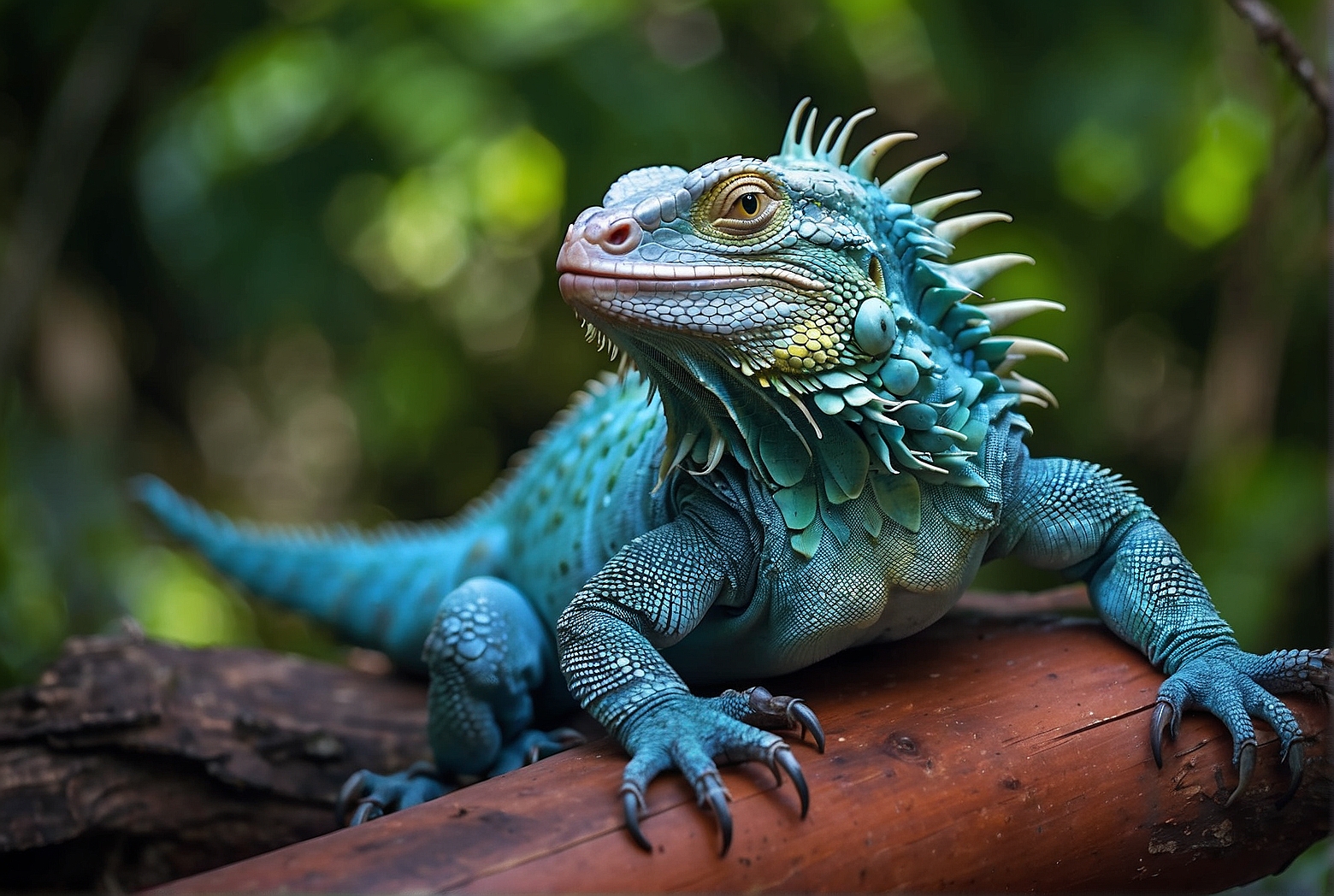Have you ever wondered why your green iguana is turning blue? It’s not uncommon for owners to be surprised when they notice their beloved pet changing color. In this article, we will explore the fascinating phenomenon of color transformation in green iguanas. From the reasons behind this unexpected change to the natural mechanisms at play, we will help you understand why your green iguana might be sporting a new shade. So, let’s unravel the mystery of why your green iguana is turning blue!
Possible Causes of a Green Iguana Turning Blue
Iguana Behavior and Color Change
As a proud owner of a green iguana, you may have noticed a surprising color change in your beloved pet. Rest assured, there are several possible explanations for this fascinating transformation. Understanding the reasons behind a green iguana turning blue involves exploring various aspects of their behavior and physiology.
Natural Defense Mechanism
One of the most intriguing reasons behind an iguana’s color change is their natural defense mechanism. Just like chameleons, iguanas have the remarkable ability to adapt their skin color to blend in with their surroundings. This camouflage helps them stay hidden from predators lurking nearby. When an iguana feels threatened, their skin may change to a vibrant blue hue as a warning sign to potential predators, signaling that they are not to be messed with.
Environmental Factors
Environmental factors play a significant role in contributing to an iguana’s color change. Lighting conditions and UV exposure affect their skin health, as excessive or inadequate UV exposure can lead to alterations in pigmentation. Additionally, fluctuations in humidity levels can influence the overall health of their skin and subsequently impact their coloration. Changes in habitat, such as a shift in the natural vegetation, may also prompt color variations in green iguanas.
Temperature Changes
Temperature changes have a direct impact on the physiology of iguanas, including their skin color. These cold-blooded reptiles rely on external sources of heat to regulate their body temperature. When they need to retain more heat, their skin may turn darker, including shades of blue. On the contrary, a lighter coloration indicates that they are trying to dissipate excessive heat. It’s truly fascinating how iguanas use color change as a visual aid to maintain their ideal body temperature.
Dietary Reasons
Believe it or not, the food your green iguana consumes also plays a part in their coloration. Certain pigments found in their diet, such as carotenoids, can influence the hue of their skin. Foods rich in carotenoids, like carrots and sweet potatoes, can enhance the intensity of their colors. Additionally, providing appropriate supplements to their diet can also impact their pigmentation. So, if you’re wondering why your green iguana is turning blue, it might be worth examining their meal plan.

Health Conditions
In some cases, a green iguana turning blue may be an indication of underlying health conditions. Skin infections and diseases, whether caused by bacteria, fungi, or parasites, can affect the pigmentation of their skin. Furthermore, problems with liver function may contribute to color variations. It’s crucial to monitor your iguana’s overall health and seek veterinary assistance if you suspect any underlying health issues.
Genetic Factors
Genetics also play a significant role in the color variations observed in green iguanas. Inherited color variations can cause iguanas to exhibit different hues, including shades of blue. Genetic mutations can occur naturally or be selectively bred to enhance or create specific color traits. These inheritable factors contribute to the mesmerizing palette of colors that iguanas display.
Stress and Anxiety
Similar to humans, stress and anxiety can affect the behavior and well-being of iguanas. When these reptiles feel threatened or experience high levels of stress, their coloration may change. It’s essential to provide a stress-free environment for your iguana, ensuring they have proper hiding spots, a comfortable enclosure, and a calm atmosphere. Creating a tranquil space can reduce anxiety and potentially prevent color shifts.
Exposure to Certain Substances
Sometimes, exposure to certain substances can alter an iguana’s skin color. Chemicals or pollutants present in their environment can seep into their skin and result in color variations. It’s crucial to ensure that your iguana’s enclosure is free from any harmful substances that could potentially impact their pigmentation or overall health.
Mating Season Influences
During mating season, iguanas undergo hormonal changes that can affect their behavior and coloration. Males often display vibrant colors to attract potential mates, including shades of blue. This visual display serves as a way to communicate their reproductive fitness and availability to females. Females may also experience slight color shifts to signal their readiness to mate. Understanding these seasonal variations in color can provide insight into the complex world of iguana courtship.
In conclusion, there are numerous factors that can contribute to a green iguana turning blue. Whether it’s their innate defense mechanism, environmental influences, temperature changes, dietary factors, health conditions, genetics, stress, exposure to substances, or mating season influences, each has its own role to play in the mesmerizing color variations observed in these captivating reptiles. As an iguana owner, it’s always important to observe, adapt, and provide the necessary care for your beloved pet to ensure they remain healthy and comfortable throughout their fascinating color-changing journey.

